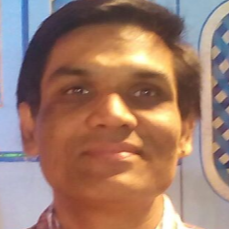
Ram Sharma
Work place: School of Engineering, The NorthCap University, Gurgaon, India
E-mail: ramsharmaaol@gmail.com
Website:
Research Interests: Computational Engineering, Engineering
Biography
Ram Sharma received B.Tech. and M.Tech. degrees in electronics and communication engineering from M.M.M. university of Technology, Gorakhpur, India, and Department of electronics and communication engineering, School of Engineering, ITM University, Gurgaon, India respectively. He is currently working as a teaching cum research fellow at The NorthCap University, Gurgaon, India. His current research interests are optical wireless communication including visible light and infrared (IR) communication systems.
Author Articles
Performance Analysis of Rectangular and circular Shape Building Deployment for an Indoor Visible Light Communication System
By Ram Sharma A. Charan Kumari
DOI: https://doi.org/10.5815/ijcnis.2017.07.02, Pub. Date: 8 Jul. 2017
The LED (Light emitting diode) based lighting systems are gaining popularity for its dual use i.e. for energy efficient lighting systems as well as for indoor optical wireless communication systems. Although, Visible light spectrum has the capability to provide very large system bandwidth (in THz), yet these systems have the limitation on account of limited modulation bandwidth. Besides, Visible light communication (VLC) systems also suffer due to multi-path propagation resulting in further depletion of system bandwidth due to pulse broadening. Therefore, one of the deployment objective of a visible light communication (VLC) system is to reduce the root mean square (RMS) delay parameter besides minimizing the number of LEDs. Hence, performance analysis of two geometrical shape structures mainly rectangular and circular models are explored for ubiquitous indoor coverage using hyper- heuristics evolutionary algorithm(HypEA) under spatial receiver mobility. Therefore, it is possible to achieve lower RMS delay spread and hence multi- fold increase in the overall system bandwidth without the use of complex system techniques like OFDM- MIMO etc.
[...] Read more.Other Articles
Subscribe to receive issue release notifications and newsletters from MECS Press journals